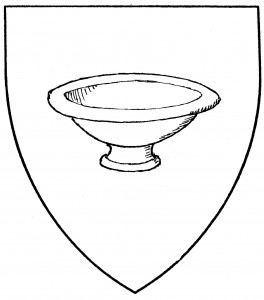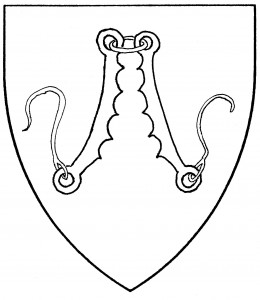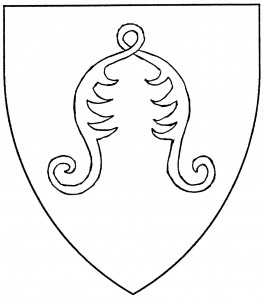A bowl is a rounded container or dish, shown in side-view or three-quarter view. In its simplest form, with a flat bottom (a form which may also be blazoned a “basin” or “bason”), it’s found in the arms of St. Albon, mid-16th C. [Bedingfeld 58]. The illustration shows a slightly more ornate, footed form, as found in the canting arms (German Schüssel) of Raumschüssl, mid-16th C. [NW 64].
The “Bowl of Hygeia” is a bowl or cup with a serpent entwined about it, or issuant from it; it is the modern symbol of pharmacists. At one point, it was only permitted to those with the proper medical credentials; but at this writing, its Society use is unrestricted.
A related charge is the “standing dish” or “platter”, found in the canting arms of Standysch, c.1460 [RH; see also Gwynn-Jones 95]. This was depicted essentially as a roundel with internal detailing, and even period heralds did not always distinguish between the two charges.
For related charges, see brazier, cup, lamp.
The Order of the Dragon’s Bowle, of Drachenwald, bears: A dragon passant coward sable charged with a bowl per pale Or and gules.
Elene Kirchenknopf bears: Per bend urdy argent and azure, a bowl and a sinister hand counterchanged.
Ambros Celidonis bears: Vert, in bend sinister a double-sail-backed salamander statant bendwise embowed argent, and a bowl fesswise Or flammant proper.


